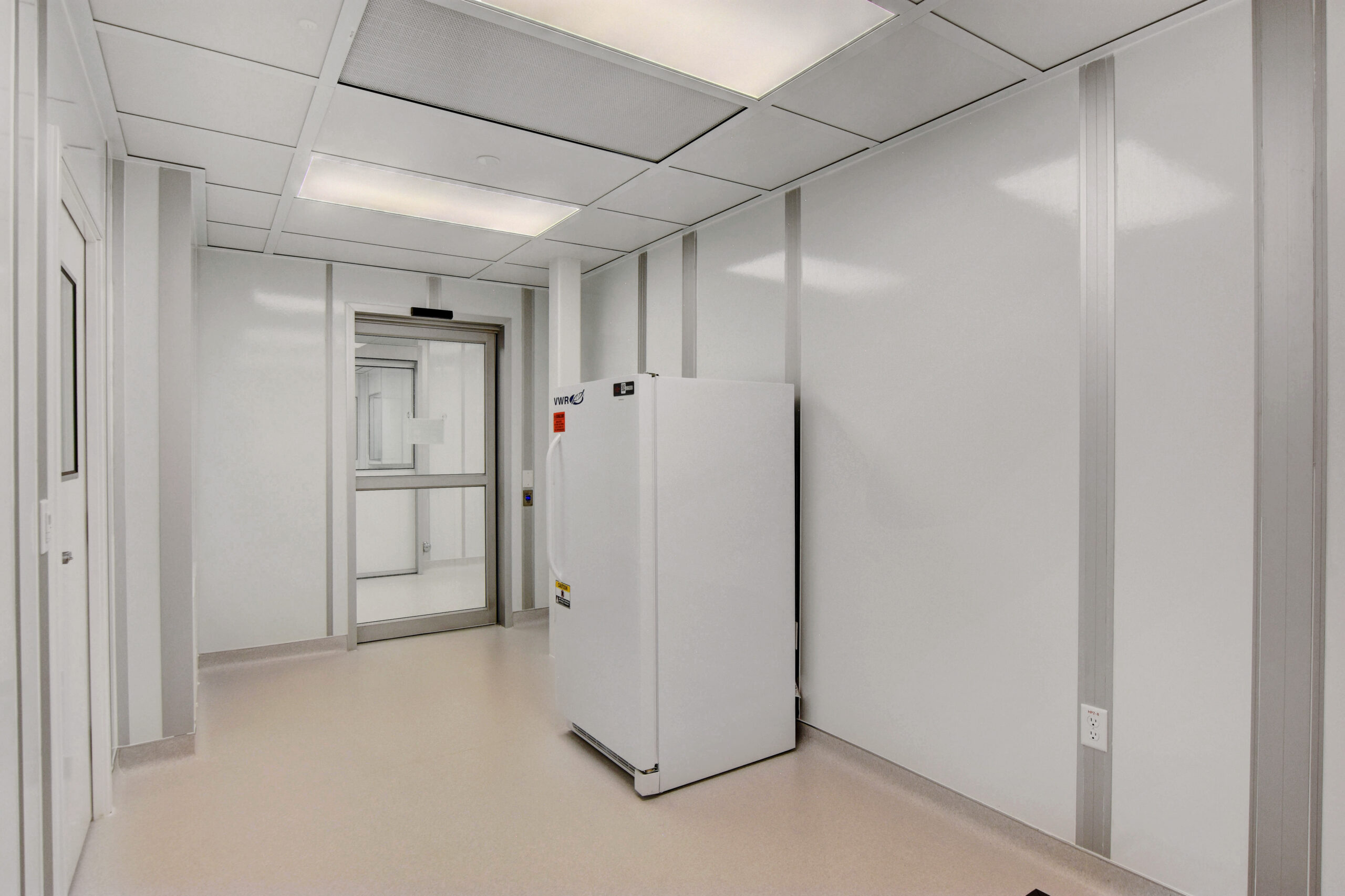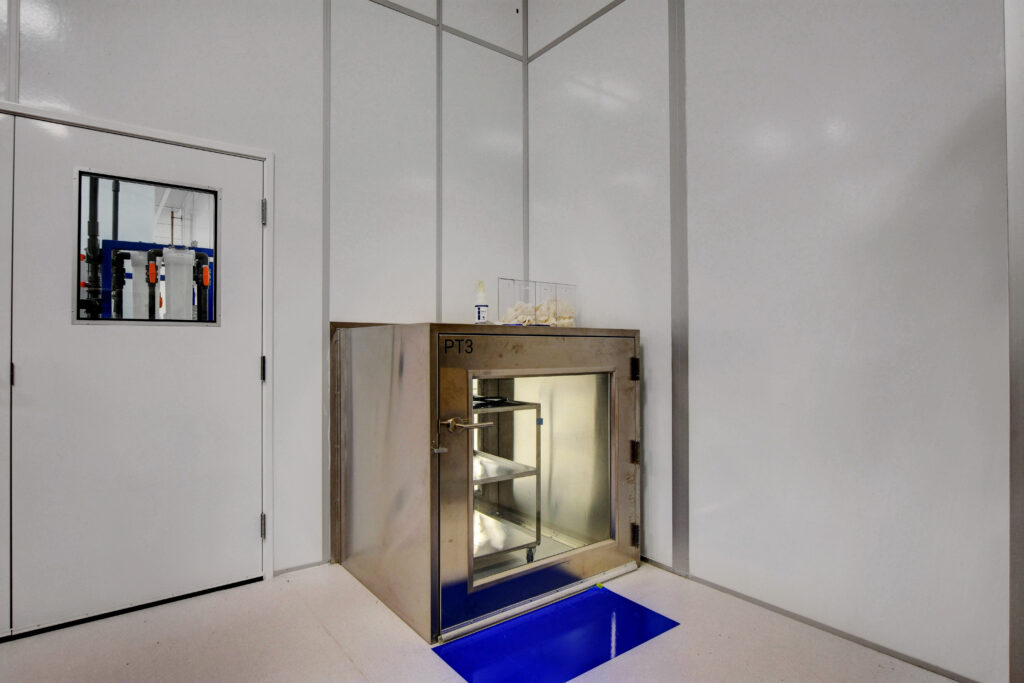
10 Jun What is a Negative Pressure Room? Understanding the Basics
Have you ever wondered how hospitals prevent infectious diseases from spreading patient to patient, despite being filled with germs? The secret lies in negative pressure rooms, which were used extensively during the COVID-19 pandemic. In hospitals, they help isolate patients, but they are also used in pharmaceuticals, research labs, and other places that need to control the spread of contaminants. But what exactly is a negative pressure room, and how do they work? In this article, we’ll explore their definition, applications, benefits, and more.
What is a Negative Pressure Room?
A negative pressure room is a controlled environment where the air pressure inside is lower than the surrounding areas. This difference in pressure creates inward airflow into the room, and prevents airborne particles, viruses, and bacteria from escaping. They have many applications, especially within research labs or the pharmaceutical industry, but as of late, they are mostly known for being used in hospitals to isolate contagious patients.
How Do Negative Pressure Rooms Work?
These spaces work by creating a lower pressure inside the space compared to the outside. They use special ventilation systems to do this, and these systems include exhaust fans, air pressure monitors, and intake vents.
To create a negative air pressure space, exhaust fans pull air out of the room to create a vacuum effect. As a result, when a door opens or there is a breach, air from the surrounding areas flows into the room to balance out the negative pressure, and this is precisely what prevents the contaminants from escaping.
Applications of Negative Pressure Rooms
Negative pressure rooms are used in various sectors to control the spread of contaminants. As we mentioned, their applications span healthcare, pharmaceuticals, research laboratories, and more, each with specific needs for containment.
Healthcare
Similarly, they are important in many medical settings, especially for isolating patients with airborne infectious diseases like COVID-19 or tuberculosis. By keeping pathogens within the room, they protect hospital staff as well as patients. During the COVID-19 pandemic, as you might expect, many hospitals used these rooms to both isolate and treat infected patients.
Pharmaceutical Industry
In the pharmaceutical industry, they are used to contain hazardous drugs, especially those that need to comply with USP 800 standards. Negative air pressure spaces are often necessary to reach regulatory compliance.
Research Laboratories
Research laboratories deal with biohazards that require strict containment protocol. As a result, these rooms provide the necessary environment to safely study pathogens that may become dangerous if spread. These spaces protect both researchers and the public at large.

Industrial Applications
In factories or industrial zones, they may be used to control the spread of dust, fumes, or chemicals. In short, they help protect workers from exposure to harmful substances. Industries like manufacturing, chemical processing, and food production commonly use negative pressure rooms for this purpose.
Design Features of Negative Pressure Rooms
To work properly, negative pressure rooms must use several critical design features. These features include advanced air pressure monitoring systems, HEPA filtration, and stringent sealing and structural considerations.
Air Pressure Monitoring Systems
Many controlled environments and cleanrooms use air pressure monitoring to maintain the right pressure levels within a space. They continuously measure and display the differential between the room and its surroundings.
HEPA Filtration
High-efficiency particulate air (HEPA) filters are used in just about all of these spaces. They capture airborne particles, including bacteria and viruses, preventing them from leaving through the exhaust air. These filters are very efficient, and they trap at least 99.97% of particles that are 0.3 micrometers or larger in size.
Sealing and Structural Considerations
Additionally, to maintain low pressure, these rooms must be sealed tight, or else all the efforts are in vain. Doors, windows, and other openings must be secure. Other considerations involve using materials and construction methods that support the integrity of the room.

Benefits of Negative Pressure Rooms
Additionally, negative pressure rooms provide a range of important benefits. These following advantages make them essential in various high-risk environments.
Safety for Workers
Negative air pressure rooms provide a safer environment for anyone looking to stay away from dangerous compounds. This is especially important in hospitals and clinics where the risk of cross-infection is high.
Compliance with Regulations
These spaces also help businesses comply with relevant health and safety regulations that require the containment of dangerous materials and pathogens. Compliance is important for running any legal operation and keeping public trust.
The Bottom Line
Negative pressure rooms have proven to be important in preventing the overall spread of infectious diseases in hospitals, protecting staff from dangerous compounds in pharmaceuticals, preventing the outbreak of dangerous pathogens in research labs, and much more. These rooms, which were widely used during the COVID-19 pandemic, isolate harmful particles and ensure a safer environment for both patients and workers. If you’re looking to isolate dangerous materials from the rest of your staff, consider building a negative pressure cleanroom.
Contact Allied Cleanrooms today to get a free quote and take the first step towards a safer, more controlled environment.

